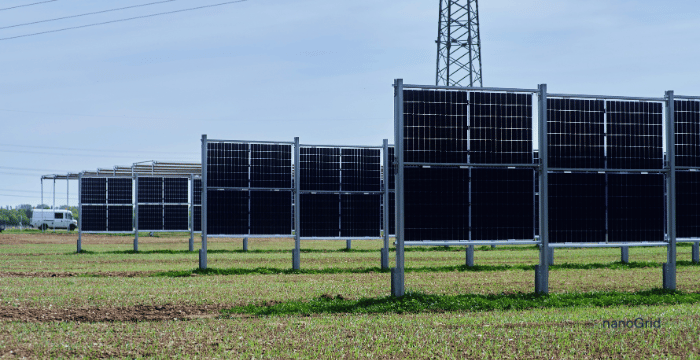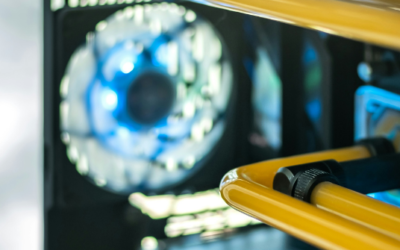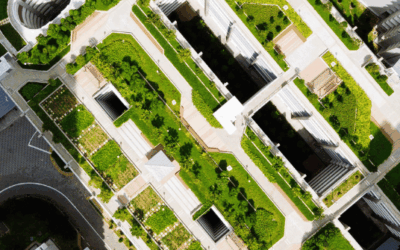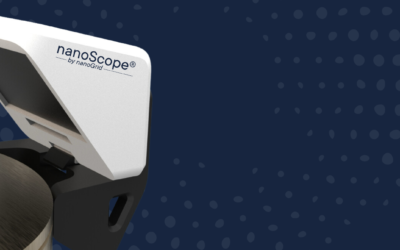Managing utilities used to mean regular maintenance schedules, equipment upgrades, and hoping that monthly invoices wouldn’t deliver unexpected surprises.
But today’s utility management isn’t just about hardware. It’s about how clearly you can see what’s actually happening behind the meter.
In the energy sector, IoT remote monitoring is revolutionizing how utilities manage and optimize energy consumption, leading to higher efficiency and sustainability.
Therefore, IoT remote monitoring, or Internet of Things Remote monitoring, is a true game changer for modern enterprises and multi-site property portfolios. With real-time utility data businesses stop guessing and start managing smarter.
But the real benefit isn’t just about catching problems, it’s about operational transparency.
With IoT remote monitoring, both building owners and tenants gain full visibility into utility consumption, making it easier to pinpoint inefficiencies, predict future usage trends, and optimize resources continuously.
The results? Lower operational costs, improved ESG compliance, and a stronger bottom line, proof that efficiency now relies more on visibility than on physical upgrades alone.
Let’s explore exactly how IoT remote monitoring drives these transformations.
What is IoT remote monitoring?
IoT remote monitoring refers to the use of Internet of Things (IoT) technology to remotely monitor and manage devices or systems in real-time.
This approach enables the collection of consumption data from sensors and devices, which is then transmitted to a cloud-based platform for analysis and processing.
In the context of energy management, IoT remote monitoring allows for continuous tracking of energy usage, providing detailed insights that help optimize energy consumption and improve efficiency. By leveraging IoT remote monitoring, organizations can reduce costs, enhance decision-making, and support green energy initiatives.
So, what’s the connection between IoT monitoring and utilities? Let’s break it down.
IoT remote monitoring in utilities: What does it really mean?
IoT remote monitoring in utilities is all about using smart sensors to remotely and continuously track energy, water, gas, and heating or cooling systems. Instead of manual meter reading, IoT-enabled devices stream detailed, real-time utility data directly into a cloud, providing visibility and granularity down to the finest detail.
But what sets IoT remote monitoring apart from traditional approaches?
Rather than relying on monthly invoices or infrequent audits, IoT monitoring gives building owners a continuous, real-time view of their utility usage. This transforms utility management from reactive to proactive.
Examples of IoT device monitoring in utility management include:
- Smart meters and submeters: Track real-time electricity or gas usage continuously, providing granular data that supports predictive maintenance and accurate billing.
Want to dive deeper into submetering or explore the difference between main meters and submeters? Don’t miss our recent blog articles. - Leak detection sensors: Instantly detect unusual water flows, such as leaks occurring overnight, allowing immediate intervention.
- Environmental sensors: Monitor temperature, humidity, and indoor air quality (CO2), directly influencing HVAC performance optimization.
- Smart HVAC controllers: Offer continuous insights into system performance, optimizing settings automatically to avoid energy waste.

Utility companies are supposed to support IoT-enabled systems by providing access to essential data. But in practice, that support is often slow and very limited.
That’s why we, at nanoGrid, deploy our in-house manufactured hardware, giving us the ability to read any meter, old or new, from any manufacturer. Discover here our approach to utility data processing.
How IoT remote monitoring unlocks portfolio-wide operational and energy efficiency
Operational efficiency is about more than just cutting costs, it’s about preventing problems before they escalate. Here are some of the main benefits building owners and occupiers can expect when it comes to utility and energy use:
Real-time alert to prevent energy consumption waste
One of the biggest benefits of IoT remote monitoring is its ability to detect anomalies. Imagine a retail location where a malfunctioning cooling system would typically remain unnoticed over a weekend. With IoT-enabled monitoring, facility managers receive instant notifications of unusual energy spikes. They can then remotely diagnose the issue or dispatch a technician before the costs pile up.
Benchmarking across sites and regions
One of the most underrated capabilities of IoT remote monitoring is its ability to benchmark performance, not just within one building, but across an entire portfolio. IoT platforms bring utility data from every site together, breaking down the data silos that limit efficiency across multiple locations.
This creates a centralized view that makes automated benchmarking possible. Facility teams can spot which zones, buildings, or regions are underperforming compared to their peers, and more importantly, why.

For example, if two office sites with similar layouts and occupancy levels show different energy consumption patterns, IoT analytics immediately surface that discrepancy. From there, teams can investigate. And root causes such as misconfigured HVAC schedules, outdated lighting controls, or other hidden inefficiencies.
This benchmarking capability also scales across geographic regions. If one logistics hub in France consumes more than its counterpart in Germany. Analytics might uncover key differences in weather patterns or maintenance schedules.
It’s not just about knowing where problems exist. It’s about understanding patterns across your entire portfolio and making targeted improvements that stick.
Curious how utility data management helps cut energy waste and boost performance?
Our article on utility data management breaks it all down, check it out on the blog.
Smarter maintenance = longer equipment life
Traditional maintenance strategies often rely on fixed schedules (wasting resources) or reactive fixes (risking failures). Instead of waiting for things to break, IoT remote monitoring uses real-time data to stay one step ahead with predictive maintenance. By continuously capturing performance metrics from HVAC units, pumps, compressors, and lighting circuits, IoT systems forecast potential failures or performance declines, allowing timely interventions.
Advantages from owners to tenants: why IoT data matter for all
Operational efficiency powered by IoT isn’t just a management perk. Tenants also receive substantial benefits. With better visibility into their actual consumption. Occupiers can actively manage their usage, lower their utility bills, and support internal sustainability targets.
For building owners, the impact is even bigger: real-time transparency into energy usage simplifies sustainability reporting, like ESG and CSRD. Above all, it enables precise cost allocation and automates compliance with frameworks like GRESB and BREEAM by providing auditable and reliable data streams.
Curious about the impact of big data on utility performance?
We dive deeper into the topic in our blog post on big data energy — worth a read if you want actionable insights.
From monitoring to action: The power of IoT in smart energy management
The true power of an IoT energy management solution comes from turning continuous monitoring into informed decisions.
IoT sensors installed across a building, from smart meters to environmental monitors and leak detectors, continuously collect utility data and feed it into a centralized cloud platform.
There, real-time analytics process the data, instantly identifying patterns and flagging irregularities. It’s all centralized in a user-friendly dashboard. Just like we do at nanoGrid.
An IoT energy management system leverages real-time data analytics and automation to enhance resource efficiency and streamline operations.
If something unexpected happens, such as unusual spikes in water usage at night or unexpected HVAC activity, the system triggers instant alerts. Facility managers and tenants can respond immediately, turning insights into proactive decisions before small issues escalate into major problems.
A real-life scenario:
Consider this scenario: at a large commercial office, a smart meter within an IoT-based remote energy monitoring system picks up a sudden spike in water usage late at night. Rather than waiting weeks for the monthly bill or manual checks, the facility manager gets an immediate alert pinpointing a leaking pipe in a basement restroom.
Thanks to IoT monitoring, the issue gets resolved in hours, preventing thousands of euros in wasted water and costly damage.
Why IoT monitoring is essential to energy efficiency
In energy management, visibility translates directly into efficiency. By identifying and addressing inefficiencies in real-time, it significantly contributes to energy saving, reducing operational expenses and enhancing overall efficiency.
Energy waste usually occurs when no one’s paying attention. The largest losses often happen overnight unnoticed, like heating systems running unnecessarily, compressors staying active, lighting relays stuck in the “on” position, and continuous water consumption indicating leaks.
It doesn’t replace human oversight but greatly improves it, ensuring buildings run efficiently, sustainably, and reliably.
Smart lighting, air conditioning, and temperature controls
Smart lighting, air conditioning, and temperature controls (like HVAC) are essential components of modern energy management systems. Utilizing IoT devices and sensors, monitoring and controlling energy usage in real-time. Smart lighting systems can adjust brightness and colour based on occupancy and natural light availability, while smart AC and temperature control systems optimize energy usage based on temperature and humidity levels.
These intelligent systems not only reduce energy consumption and lower energy costs but also improve comfort and productivity. By integrating these smart controls, organizations can achieve significant savings and contribute to energy conservation efforts.

Energy storage solutions for a sustainable future
Energy storage solutions are critical for a sustainable future, enabling the efficient use of renewable energy sources and reducing reliance on fossil fuels.
IoT energy management systems optimize energy storage by monitoring energy usage patterns, predicting energy demand, and adjusting energy storage levels accordingly. Additionally, IoT monitoring optimizes energy storage systems by ensuring efficient energy distribution and enhancing resilience during power outages.
By leveraging IoT energy management systems and energy storage solutions, organizations can support green energy initiatives, reduce energy costs, and enhance their sustainability credentials. This integration of energy storage with IoT systems ensures a more resilient and sustainable energy infrastructure.
Making ESG and CSRD reporting more accurate with IoT
ESG and CSRD reporting isn’t just another compliance checkbox. It’s now central to almost every business strategy, operational transparency, investor confidence, and market competitiveness.
Yet, manual sustainability data collection remains very common. IoT remote monitoring replaces manual, error-prone processes with automated, traceable, and audit-ready data streams that directly feed into CSRD’s 3,700+ ESG data points and ESRS standards like energy intensity (ESRS E1) and tenant-level Scope 3 emissions (ESRS E5).
Eliminating manual data errors and lagging reports
Traditional ESG reporting still relies on manual data collection methods. Think of spreadsheets, monthly invoices, or scattered emails. Errors accumulate, reports lag weeks behind actual events, and audit trails become cloudy. IoT remote monitoring automates the reporting process while meeting CSRD’s audit-proof data traceability requirements, thanks to secure, time-stamped data logs
Data flows from smart meters, submeters, and IoT sensors directly into centralized reporting platforms like Measurabl, Scaler or Deepki. This removes human error, delays, and fragmented reporting processes. Real-time insights mean sustainability teams no longer chase down outdated or incomplete data.
Instant, audit-ready sustainability data
IoT-powered monitoring ensures that every data point is fully traceable, from sensor reading to final ESG report. Because the data is gathered automatically, records are consistent, verifiable, and instantly available for internal or external audits.
Imagine preparing a report for ESG compliance. Instead of assembling data manually over weeks, a sustainability manager can export real-time energy and emissions data directly from their IoT-based utility management system. Audit trails are clear, traceability is automatic, and regulatory compliance is simplified.
Visibility is power, and IoT remote monitoring delivers it
In today’s energy landscape, efficiency isn’t just about better equipment. It’s about better insight. And that’s exactly what IoT remote monitoring offers: a continuous, real-time view into your energy systems that replaces guesswork with precision.
An IoT energy management solution provides a comprehensive approach to optimizing energy usage, reducing costs, and enhancing sustainability.
Whether you manage commercial properties, multi-site portfolios, or industrial facilities, IoT transforms the way you understand and optimize energy usage. By collecting real-time data from smart meters, HVAC systems, lighting circuits, and water networks, IoT platforms unlock immediate action: reducing energy costs, preventing equipment failures, and boosting operational efficiency.
And the impact goes beyond maintenance and cost control. Whether it’s semi-automated CSRD or ESG reporting or tenant-level visibility and predictive maintenance, IoT data becomes the common language across departments, helping owners, tenants, and sustainability teams make smarter, faster decisions.
Because at the end of the day, smart energy management isn’t just about adding new systems, but about seeing clearly, acting early, and improving continuously. And that starts with IoT remote monitoring.
Curious how nanoGrid enables near-total utility data coverage for clients like WDP, CBRE, and Goodman? Our IoT-based system uses on-site hardware to capture every data point from every utility meter possible. Get in touch, we’d be happy to walk you through it.




